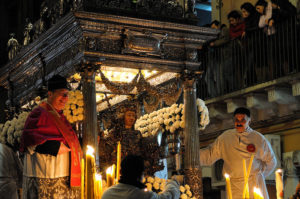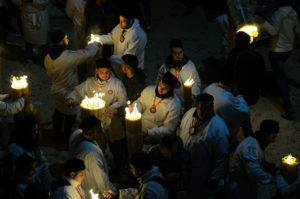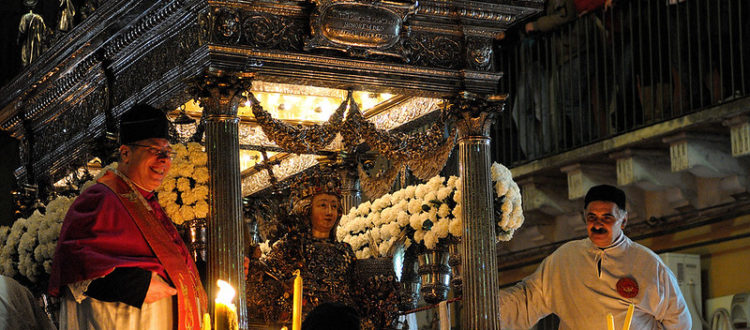In Catania since 3 al 5 February the Feast of Sant’Agata returns

Procession of the Fercolo with Sant’Agata
In Catania since 3 al 5 February the Feast of Sant’Agata returns. The one in honor of the patron saint is the most loved celebration by the people of Catania. A highly anticipated appointment that, between faith, traditions and folklore, it attracts about one million people to the Etna capital.
THE TRADITION
According to the Catholic tradition, Agata, lived in the first half of the third century, she was a young noblewoman guided by unwavering faith and devotion. The Quinziano proconsul, fell in love with her, he tried in vain to seduce her. For this reason the man had her arrested, accusing her of transgressing the edict of the emperor Decius, who asked all Christians to repudiate their faith. The young woman, refused to worship the pagan gods, she was tortured and tried. At the height of his anger, Quinziano even went so far as to have her breasts torn out with two pincers. Despite the martyrdom, Agata never gave up her faith and died in prison. His body, embalmed and wrapped in a red cloth, would have stopped several times, according to legend, the lava that loomed over Catania. Thus Agata was proclaimed patron saint of the city. So every year in Catania, from 3 al 5 February, the Feast of Sant'Agata is back.
THE PARTY

Devotees with the traditional white sack and black velvet cap
The first day of the Feast of Sant'Agata is characterized by the offering of candles. The religious authorities, civilian and military, aboard the eighteenth-century carriage of the Senate, parade in procession behind the eleven candelora, large carved and gilded buildings, representative of corporations or trades, carried on the shoulders of the faithful. The first day ends in Piazza Duomo with a great fireworks display.
The 4 February opens with the solemn Mass of Dawn. Already at dawn, the faithful begin to populate the streets dressed in the traditional sackcloth, an ankle-length white coat tightened at the waist with a drawstring, a black velvet cap and white gloves. Sant'Agata's first meeting with the city begins. The procession of the fercolo, pulled by thousands of faithful, crosses the symbolic places of martyrdom. An acclamation resounds among the streets: "citizens, citizens, we are all devotees all, citizens, viva Sant’Agata ”, accompanied by the waving of white handkerchiefs. The fercolo returns to the cathedral at the first light of dawn.
The 5 February, final day of the celebrations, the second part of the procession begins. Among the crucial moments is the passage along the uphill via San Giuliano, among the most dangerous points of the city due to the slope. The heavy fercolo is transported running up to Piazza San Domenico. A moment full of suggestion is the subsequent song of the Benedictine nuns, cloistered nuns. The fireworks accompany the return of the Saint to the Cathedral and the closing of the solemn celebrations.
GASTRONOMY

Le minnuzze di Sant’Agata
During the celebrations in honor of the patron saint, all the pastry shops in Catania are invaded by the olive groves of Sant’Agata and the cassatelle or minnuzze of Sant’Agata. The former are sweets prepared with almond flour and sugar, with an oval shape and green color, similar to olives. They can be found coated in sugar or melted chocolate. The second are cassatine covered with icing and with a candied cherry. They resemble the shape of a breast, symbol of the martyrdom suffered by Sant'Agata.
RESTRICTIONS
Also this year the celebrations of Sant'Agata will suffer major restrictions due to the pandemic in progress. In compliance with current regulations it will not be possible to carry out the procession of the Saint through the streets of the city. Among the hypotheses being considered is the exposure of the reliquary bust in front of the Cathedral, to allow the faithful a greeting to the Saint.

